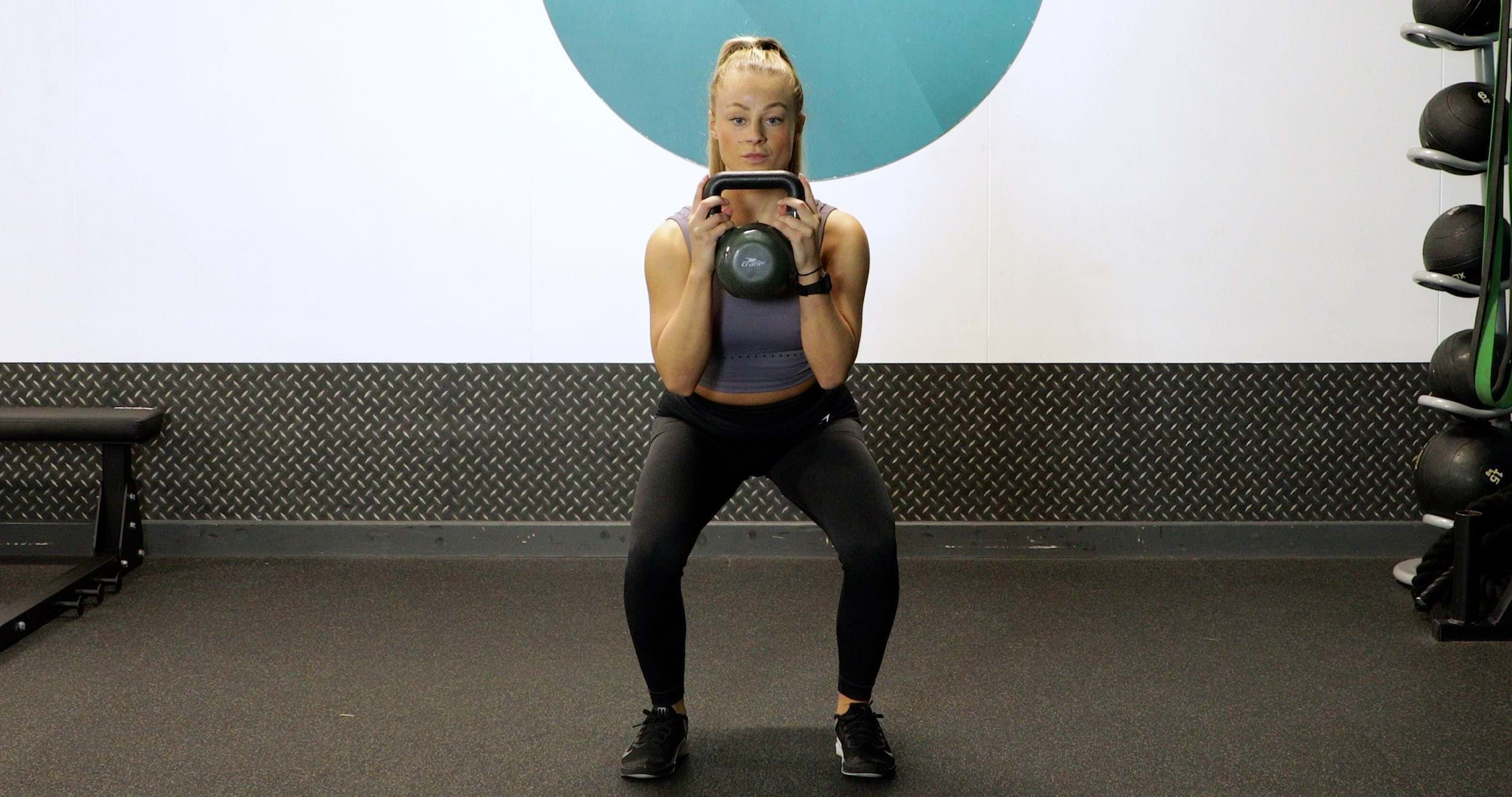Tempo Squats
What Are Tempo Squats?

Tempo squats are a way of adding challenge to any squat variation by slowing own the eccentric portion of the lift. The eccentric refers to the part of the exercise that the muscle lengthens -- in the instance of the squat, this is during the lowering phase.
Moving slowly through an exercise creates a greater challenge by adding more time under tension which forces the muscle groups to work harder. Performing tempo squats can also aid form and eliminate the momentum that can come from bouncing out of the bottom of the squat. This reduced momentum means that the lower body muscles must work harder to extend out of the squat.
Check out some other squat variations: landmine squats, zercher squats, suitcase squats, pistol squats, squat jumps
Commonly Asked Questions On Tempo Squats
This type of tempo squat refers to how many seconds is spent in each portion of the lift. In this instance, 3 seconds is spent during the lowering phase of the squat (known as the eccentric), 0 seconds is spent in the bottom of the squat and 3 seconds is spent during the upwards movement (known as the concentric).
This type of training allows for a more challenging squat that places the muscles under prolonged time under tension.
Turning your squats into tempo squats is an effective way to building strength and improving squat form.
The tempo squat forces performers to reduce the load used to place the muscles under greater time under tension and eliminates momentum to ensure controlled technique. Increased time under tension and lack of momentum makes the exercise more challenging than other squat variations.
The weight used when performing tempo squats is likely to be lighter than with other squat variations, however this is not always the case. Choose a weight that allows you to use good form and reach at least parallel depth for your desired number of reps.
It is difficult to say what the best tempo for muscle growth is. However, utilising anywhere between 3-4 seconds for the eccentric and concentric portion of the squat is likely to be appropriate for most with a 1 second pause at the bottom. Any longer than this may affect adherence, while also failing to expose the body to greater load.
Tempo Squat Tips
Tempo squats can be performed as a progression to bodyweight squats, or as a way to add further challenge to any squat variation. Performing squats with a slower tempo can also highlight issues with form and allow corrections to be made.
When performing tempo squats, count to 3 seconds (or however many you’ve chosen) and make sure to descend down evenly (don’t rush the first half and slow down or vice versa) during that time. Pause at the bottom, before powering up to the top of the squat.
How To Do Tempo Squats
Set up your squat by positioning any equipment correctly and adopting your preferred stance.
Brace your core and begin to squat down by pushing your hips back and bending at the knees at the same time. As you lower, push your knees out to prevent them caving inward.
As you begin the descent, count to three seconds and move at a pace that allows your thighs to reach parallel with the floor at the three second mark.
Pause for one second before pushing up through both of your feet to return to standing. Focus on driving the floor away with power, making sure to push through the whole of each feet.
As you return to standing, lightly squeeze the glutes but avoid pushing your hips too far forward as this places pressure on the lower back, and keep a soft bend in the knees to avoid locking out the legs.
If you’re not sure if any of the above exercises are suitable for you, please consult your doctor before you start it. Need guidance on how to perform the exercise? Ask a personal trainer at your gym.